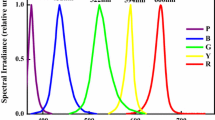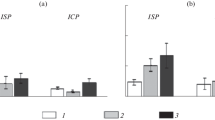Abstract
Phytoparasitic nematodes are plant pests causing serious problems to a broad range of hosts, and Meloidogyne species are widely recognized as the most damaging among the root knot nematode groups. During the incompatible interaction between avirulent pathogens and resistant tomato cultivars, juvenile nematode invasions provoke a defense cascade, culminating in hypersensitive responses. Methods to detect the key molecules involved in oxidative metabolism of the infected tomato roots are described here.
Access this chapter
Tax calculation will be finalised at checkout
Purchases are for personal use only
Similar content being viewed by others
References
Leonetti P, Zonno MC, Molinari S, Altomare C (2017) Induction of SA-signaling pathway and ethylene biosynthesis in Trichoderma harzianum-treated tomato plants after infection of the root-knot nematode Meloidogyne incognita. Plant Cell Rep 36(4):621–631
Molinari S, Fanelli E, Leonetti P (2014) Expression of tomato salicylic acid (SA)-responsive pathogenesis-related genes in Mi-1-mediated and SA-induced resistance to root-knot nematodes. Mol Plant Pathol 15(3):255–264
Leonetti P, Melillo MT, Bleve-Zacheo T (2011) Nitric oxide and hydrogen peroxide: two players in the defence response of tomato plants to root-knot nematodes. Commun Agric Appl Biol Sci 76(3):371–381
Melillo MT, Leonetti P, Leone A, Veronico P, Bleve-Zacheo T (2011) ROS and NO production in compatible and incompatible tomato-Meloidogyne incognita interactions. Eur J Plant Pathol 130:489–502
Schopfer P, Plachy C, Frahry G (2001) Release of reactive oxygen intermediates (superoxide radicals, hydrogen peroxide, and hydroxyl radicals) and peroxidase in germinating radish seeds controlled by light, gibberellin, and abscisic acid. Plant Physiol 125(4):1591–1602
Velijovic-Jovanovic S, Noctor G, Foyer CH (2002) Are leaf hydrogen peroxide concentrations commonly overstimated? The potential influence of artefactual interference by tissue phenolics and ascorbate. Plant Physiol Biochem 40:501–507
Melillo MT, Leonetti P, Bongiovanni M, Castagnone-Sereno P, Bleve-Zacheo T (2006) Modulation of reactive oxygen species activities and H2O2 accumulation during compatible and incompatible tomato-root-knot nematode interactions. New Phytol 170(3):501–512
Melillo MT, Leonetti P, Veronico P (2014) Benzothiadiazole effect in the compatible tomato-Meloidogyne incognita interaction: changes in giant cell development and priming of two root anionic peroxidases. Planta 240(4):841–854
Ukeda H, Maeda S, Ishii T, Sawamura M (1997) Spectrophotometric assay for superoxide dismutase based on tetrazolium salt 3′-[1-(phenylamino)-carbonyl-3, 4-tetrazolium]-bis(4-methoxy-6-nitro)benzenesulfonic acid hydrate reduction by xanthine-xanthine oxidase. Anal Biochem 251(2):206–209
Frahry G, Schopfer P (2001) NADH-stimulated, cyanide-resistant superoxide production in maize coleoptiles analyzed with a tetrazolium-based assay. Planta 212(2):175–183
De Gara L, de Pinto MC, Tommasi F (2003) The antioxidant system vis à vis reactive oxygen species during plant- pathogen interaction. Plant Physiol Biochem 41:863–870
Hoagland DR, Arnon DI (1950) The water-culture method for growing plants without soil. Calif Agr Expt Sta Circ 347:1–32
Molinari S, Lamberti F, Crozzoli R, Sharma SB, Sanchez M, Portales L (2005) Isozyme patterns of exotic Meloidogyne spp. populations. Nematol Medit 33:61–65
Beyer WF Jr, Fridovich I (1989) Characterization of a superoxide dismutase mimic prepared from desferrioxamine and MnO2. Arch Biochem Biophys 271(1):149–156
Acknowledgment
The author wish thank Dr. T. Bleve-Zacheo and Dr. A. Bobba, for having shared their specialistic compentences. This work has been partially supported by the project P.S.R. SaVeGraINPuglia 2014-2020, Progetti Integrati per la Biodiversità.
Author information
Authors and Affiliations
Corresponding author
Editor information
Editors and Affiliations
Rights and permissions
Copyright information
© 2018 Springer Science+Business Media, LLC
About this protocol
Cite this protocol
Leonetti, P. (2018). ROS and Cell Death in Tomato Roots Infected by Meloidogyne Incognita . In: De Gara, L., Locato, V. (eds) Plant Programmed Cell Death. Methods in Molecular Biology, vol 1743. Humana Press, New York, NY. https://doi.org/10.1007/978-1-4939-7668-3_8
Download citation
DOI: https://doi.org/10.1007/978-1-4939-7668-3_8
Published:
Publisher Name: Humana Press, New York, NY
Print ISBN: 978-1-4939-7667-6
Online ISBN: 978-1-4939-7668-3
eBook Packages: Springer Protocols




